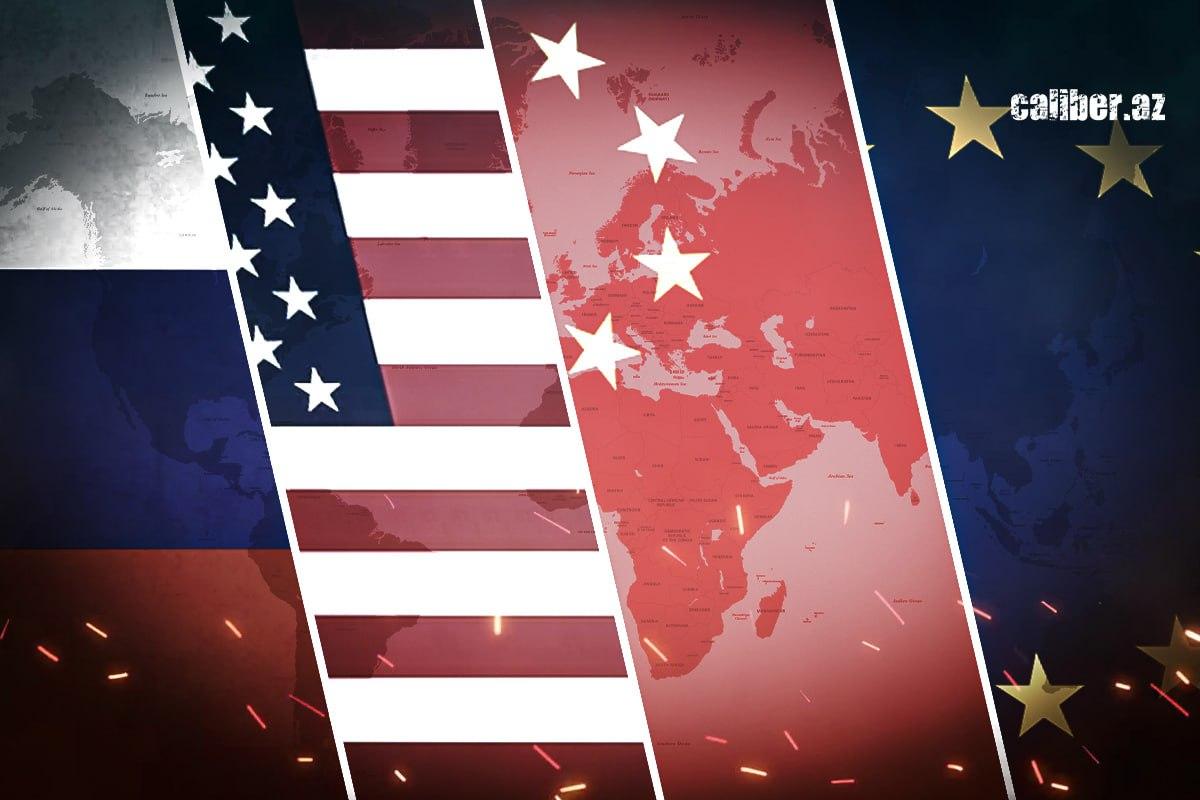Global conflicts and stable instability Dynamics of proxy wars
The new wave of accusations from the United States against China regarding support for Russia reflects the intertwining of various conflict narratives. Regional conflicts are evolving into proxy dimensions of a broader global confrontation, creating a global "puzzle" of stable instability, which could have different consequences for its constituent parts.
After more than two and a half years of the war between Russia and Ukraine, we have become accustomed to the regular accusations leveled at third countries for allegedly supporting one side of the conflict. Last week brought a new round of such accusations. Specifically, US Deputy Secretary of State Kurt Campbell claimed that Beijing is providing Russia with "very substantial" military assistance. His remarks, widely covered by leading Western media, suggest that China is not only supplying dual-use goods to Moscow but also directly providing military technologies.

From the outset of the active military conflict in Eastern Europe, China has repeatedly emphasized that it is not supplying weapons to either side and remains neutral and unbiased. Furthermore, Beijing argues that it’s actually the US and other Western nations that are stoking the flames, expanding the war's scale and geography, and increasing the number of casualties. As a condition for de-escalation and the possibility of negotiations to end the conflict, China insists that all third-party arms shipments must cease.
Rather than debating who is right or wrong, it's important to recognize that with the limited information available, we cannot definitively know the truth. As Sun Tzu taught, war is always “the art of deception.” We’ll leave the fact-finding to the officials involved.
What’s more relevant is how these mutual accusations fit into the larger global trends. We’ve covered these trends extensively in the past: the ongoing transformation of international relations, driven by a growing rivalry between the status quo power (the US) and the increasingly powerful challenger (China), which seeks to reshape key aspects of the unipolar world order.
All-encompassing proxy nature of conflicts
Regardless of who is actually supplying or not supplying what to whom, the latest wave of accusations against China serves as a telling illustration of an important process—the intertwining of various regional conflicts. These conflicts are no longer isolated or distant events on the world’s geopolitical map; they are increasingly becoming parts of a larger puzzle. This process is fueled by growing competition between major powers vying for global leadership.
In each regional conflict, certain weaknesses and challenges faced by these powers are exposed. Geopolitical rivals are quick to “rub salt” on these wounds, seeking to weaken their competitors and divert their resources and attention from more strategic theaters of confrontation. And as time goes on, this becomes more pronounced. The deeper these regional conflicts become intertwined, the more inclined major states are to approach them with an “eye for an eye” mindset.
As a result, previously unrelated regional conflicts in various parts of the world are, to varying degrees, turning into proxy dimensions of larger global confrontations. This doesn't mean that the specific regional factors and the original causes of the conflicts become irrelevant. However, the proxy dynamic significantly alters the initial circumstances, further undermining prospects for resolution. It becomes pervasive and all-encompassing, fundamentally changing the way major powers think and act regarding different conflicts.
Let’s return to the US accusations against China regarding "very substantial" military assistance to Moscow. What we are witnessing here is the intersection of Washington and Beijing's strategic rivalry with the regional conflict in Eastern Europe. Although the US accusations stem from the Russia-Ukraine war, it’s clear that the primary concern for Washington lies in its broader strategic competition with China.
What’s particularly revealing is that in accusing China, US officials are already voicing their main concerns. These concerns are not so much about potential Chinese supplies to Russia, but rather the reverse. Campbell emphasizes that in the past, Moscow refrained from providing Beijing with its most advanced military technologies. Now, however, he claims that the US is "concerned about a particular number of military arenas where there appears to be some determination to provide China with greater support." He lists these areas: "That has to do with submarine operations, activities of aeronautical design, including stealth; that also involves capacities on missile capabilities."

Interestingly, Campbell’s statements came just two weeks after U.S. National Security Advisor Jake Sullivan's visit to China. As we analyzed following that visit, despite many constructive comments from both sides, Washington and Beijing still lack the means to escape the "Thucydides Trap." The level of fear in their relationship is not yet high enough. However, it’s not to say that fear is absent altogether. This is why there is active and extensive proxy engagement between them—transferring their rivalry to peripheral conflicts, as neither side currently desires a direct and immediate confrontation. The prospects of such a hypothetical direct clash are too uncertain and difficult, if not impossible, to calculate. Therefore, proxy conflicts also serve to clarify the actual balance of power in various regions of the world, highlighting the strengths and weaknesses of the competitors.
Modern stable instability
The phenomenon of proxy conflicts is as old as history itself and as natural as the rising or setting sun. However, practically speaking, it's important not only to document and describe this phenomenon but also to understand how it influences the complex web of intertwined conflicts. Does it lead to a simultaneous increase in tension across the entire "puzzle"? Or does it, conversely, reduce risks in global confrontations by "venting steam" through regional conflicts?
During the Cold War, many scholars analyzing proxy conflicts leaned towards the idea of "venting steam." Their theoretical insights are known as the "stability-instability paradox." This concept is commonly attributed to American political scientist Glenn Snyder (though the phenomenon was discussed in broader terms even before him). In 1965, Snyder coined the term and explained the paradox. He analyzed the relationship between the global stability provided by the deterrent effect of nuclear weapons and the more traditional concept of conventional force balance. He concluded that there is indeed a connection: as stability is established at the strategic nuclear level, the likelihood of destabilization at lower levels of confrontation increases.
During the Cold War, this pattern was often observed in the fact that the USSR and the USA could not afford a direct military confrontation, as it would likely quickly escalate into a nuclear conflict. Therefore, they engaged more actively in indirect confrontations through regional proxy conflicts. This explains the large number of limited-scale wars around the world, where the US and USSR actively supported opposing local forces.
When viewing the current proliferation of proxy conflicts through the lens of the stability-instability paradox, the prospects for regional conflicts appear even more concerning. Especially considering the differences between today’s situation and the peak of the Cold War, when Snyder proposed the paradox. The key distinction is that during much of the Cold War, the international system was fixed in a bipolar format. Along with the nuclear deterrent, this provided global stability for several decades. Today, however, the world is in turmoil as the previous three-decade system collapses and the contours of a new order are only beginning to take shape, with active struggles over its definition. Thus, the only remaining factor of global stability is nuclear weapons, and even their significance is sometimes questioned amid the uncertainty of shifting power balances and emerging threats.

Therefore, we can expect that both the number of proxy conflicts and the intensity of confrontations within them will continue to increase in the near future. Unless some constraints are introduced into this process, there is a risk that a chain of proxy wars could eventually link regional conflicts into a global belt of uncontrollable instability.
However, a close examination of Snyder’s original work reveals that his interpretation of the stability-instability paradox was not as straightforward as often assumed. He noted that while there is a high probability of proxy conflicts escalating to global confrontations, this can sometimes result in an overall stabilizing effect. In other words, if major players are uncertain about their ability to contain proxy competition within regional conflicts, they might be more inclined to limit regional confrontations due to the excessive risks of nuclear escalation.
This observation is relevant to the current situation. If it holds true, residents of Taiwan might have some reason for relief—at least for now—given the high likelihood of the Taiwan conflict escalating into a direct kinetic confrontation between China and the U.S. On the other hand, residents of many other conflict zones, including Eastern Europe, should be increasingly cautious to prevent the emergence of a global chain of proxy wars.








